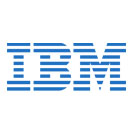
IBM
Armonk, New York, U.S.Founding:
Establishment: Founded in 1911 as the Computing-Tabulating-Recording Company (CTR) through a merger of four companies: Tabulating Machine Company, International Time Recording Company, Bundy Manufacturing Company, and the Computing Scale Company of America.Name Change: Renamed IBM in 1924, symbolizing the company’s broader vision and evolving business focus.
Milestones:
Early Computing Advancements: IBM made significant strides in computing technology, such as the development of the Harvard Mark I computer in the 1940s.Mainframe Dominance: Throughout the mid-20th century, IBM established itself as a leader in mainframe computers, launching the System/360 in the 1960s, which became a benchmark for computing systems.
PC Revolution: IBM’s entry into the personal computer market in the early 1980s with the IBM PC became a pivotal moment in the tech industry.
Evolution:
Diversification: Over time, IBM diversified its offerings beyond hardware, venturing into software and services, leading to a shift from a hardware-centric company to a solutions and services provider.
Global Expansion: Expanded globally, setting up operations in various countries and becoming a multinational corporation.
Cultural Context:
Corporate Culture: IBM is known for its strong corporate culture emphasizing professionalism, innovation, and customer service.
Role in Society: Historically, IBM played a significant role in technological advancements and computing infrastructure, contributing to societal progress.
Positioning & Brand Values:
Positioning: Positioned itself as a leader in technology innovation and enterprise solutions.
Values: Emphasized innovation, trust, reliability, and customer-centricity.
Product Design:
Innovation: Known for pushing the boundaries of technology with inventions in hardware and software.
User-Focused: Designing products with a focus on usability and functionality
Visual Evolution:
Logo and Branding: The IBM logo has undergone subtle modifications over the years, maintaining a consistent, professional image.
Successes and Challenges:
Successes: Pioneering technology advancements, strong market presence, and a diverse range of products and services.
Challenges: Adapting to market shifts, increased competition, and technological disruptions.
Controversies:
Antitrust Issues: IBM faced antitrust scrutiny in the 1970s and 1980s regarding its dominant position in the computing industry.
Employee Layoffs: Faced criticism for significant employee layoffs during periods of restructuring.
Product Range:
Hardware: Mainframe computers, servers, storage devices.
Software: Operating systems, middleware, analytics, and cloud services.
Services: Consulting, IT infrastructure services, and business solutions.
Competitors in Different Segments:
Hardware: Competes with companies like Hewlett-Packard Enterprise (HPE) and Dell in server and storage markets.
Software: Competes with Microsoft, Oracle, and SAP in software solutions.
Services: Competes with Accenture, Deloitte, and other consulting and IT services firms.
Revenue Streams & Financials:
Revenue Streams: Generated revenue through hardware sales, software licensing, services, and cloud computing solutions.
Financials: Varied over time due to shifts in market demands, but remained a major player in the technology industry.
- Other Brands
- Apple
- Microsoft
- Amazon
- Google
- Samsung
- Toyota
- Mercedes-Benz
- Coca-Cola
- Nike
- BMW
- McDonald’s
- Tesla
- Disney
- Louis Vuitton
- Cisco
- Instagram
- Adobe
- IBM
- Oracle
- SAP
- Facebook
- Chanel
- Hermes Paris
- Intel
- YouTube
- JP Morgan
- Honda
- American Express
- Ikea
- Accenture
- Allianz
- Hyundai
- UPS
- Gucci
- Pepsi
- Sony
- Visa
- Salesforce
- Netflix
- PayPal
- Mastercard
- Adidas
- ZARA
- AXA
- Audi
- airbnb
- Porsche
- Starbucks
- GE
- Volkswagen
- Ford
- Nescafe
- Siemens
- Goldman Sachs
- Pampers